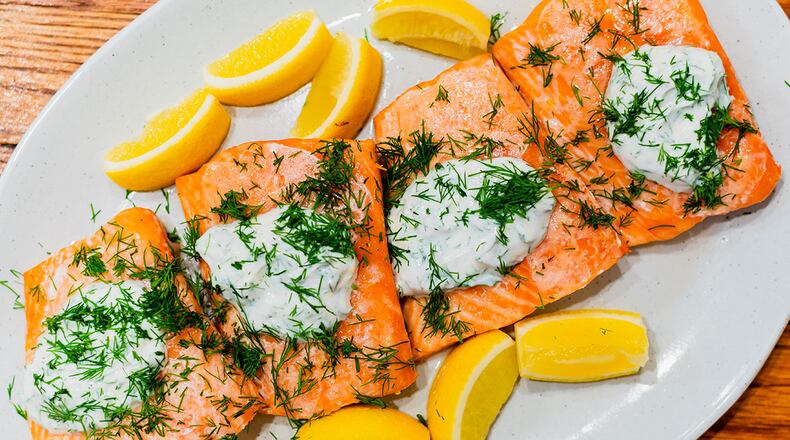Slow-roasting is not something that usually makes much sense for a weeknight dinner. Such meals typically involve large cuts of meat and take hours. Even though that time is mostly hands-off, it requires, well, being at home, watching an oven.
But large cuts of meat are not the only things that can be slow-roasted. The technique of cooking a protein at a low temperature is, actually, great for fish — salmon in particular. Gradually cooking a few salmon fillets over the course of 15 minutes helps to prevent that white gunk, called albumin, from leeching out of the fish, and it also becomes much, much harder to overcook.
Relying on the gentle heat of the oven instead of the rapid-fire heat of a quick stovetop sear decreases your chances of botching the fish. That’s because the time it takes for the fish to go from perfect to dry and overcooked increases from seconds to minutes. It also gives you the time and space to actually cook a side dish or tend to a howling kid.
Turning that oven down takes fish cookery from intimidating to easy. The fillets only need a bit of salt and pepper, plus a rubdown of good extra-virgin olive oil. Laying thinly sliced lemon rounds on top of the fish as it cooks subtly imbues it with its flavor, eliminating the need for marinating.
To finish the dish, the fillets get a springtime makeover with lots of fresh dill, more lemon and yogurt. The bright, acidic and herbaceous toppings counter the rich fish, and they’ll pair well with lightly cooked spring vegetables, if you’d like, or else quickly steamed couscous. Not a fan of dill? Mint or parsley would both work wonderfully in its place. And any thick yogurt will do — full-fat, fat-free or even non-dairy are all totally acceptable. (If you’ve only got thinner, non-Greek yogurt, you may want to drain it a bit first so that it dollops more easily. Or just don’t worry about it; call it a yogurt drizzle.)
The only other trick here is to make sure to pick up salmon fillets that are all similar in thickness. The timing in the recipe below is based on fillets between 3/4 and 1 inch thickness. Thinner fish will, obviously, cook a bit quicker; thicker fillets will need a bit more time.
RELATED:
Read more stories like this by liking Atlanta Restaurant Scene on Facebook, following @ATLDiningNews on Twitter and @ajcdining on Instagram.
About the Author
Keep Reading
The Latest
Featured


